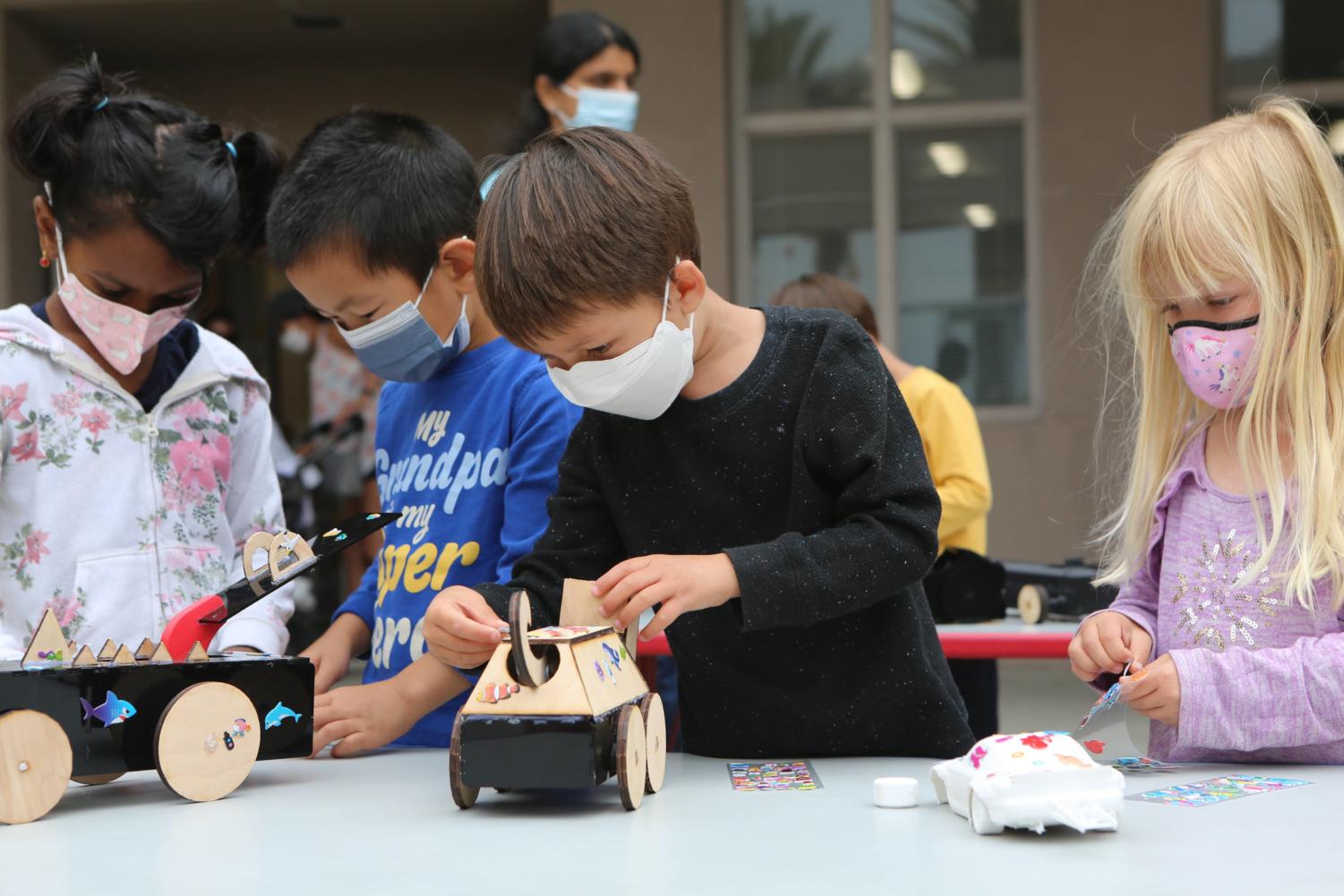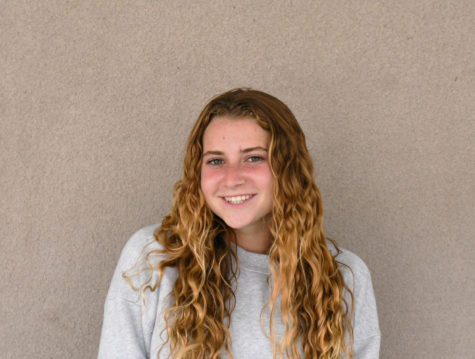Engineering class creates, donates toys
June 3, 2022

Jessie Castelloe (11) and Kemma Snyder (12) stood in the courtyard outside Westview’s preschool classroom, watching the preschoolers, who giggled, chatted, and placed stickers on the toys that the Introduction to Engineering Design (IED) class had designed. Four- and 5-year-old students were filled with awe and excitement as they rolled the toys around, and added color to what had been a plain tan and black just a few minutes prior. Castelloe and Snyder beamed with pride as the students played. Not only were their creations working, but the kids liked them.
This spring, science teacher Mike Kurth brought the IED class to Westview. The projects in IED follow a progression, starting with less-sophisticated mechanical engineering work and becoming more complex as students learn the ropes of designing products with computer-aided design (CAD). While varying in difficulty, the projects that Kurth chose for his students throughout the year are all curated with the objective of engaging them. In the beginning, he had the students make boats that could go the length of a pool lane, but by the end of the class, students were expected to create laser light boxes to enhance their end-of-year party.
Recently, the class finished their current project, which is the design and creation of toys that will be sent to Ukrainian refugees.
Kurth chose toys to be one of the final projects in IED, because he said they provide the unique opportunity for students to form a connection with their work.
“To have a project where a student says, ‘This is mine, I relate to it, this is something that came from me,’ is really important,” Kurth said. “[It’s about] ownership and engagement. And so all I do is set up specs and constraints.”
One of the specs for the toy project was that the body of the toy would move in some way, to test the IED students’ capabilities, as well as ensuring that the toys would capture the attention of young children.
As the toys will ultimately be given to child refugees, the IED class thought, who better to test out the products than Westview’s on-campus preschoolers. The pre-schoolers first got to see the prototypes, and later were able to test and decorate the final products with stickers.
You could see the kids were playing with the toys,” Kurth said. “Some of my [IED] students were like, ‘Ooh, we have to make [our toy] more aggressive, tougher,’ you know, ‘[or else] this thing is going to fall apart.”
Five-year-old Griffith was one of the final quality assurance testers, and noted that he appreciated how the toys were dynamic, and constructed with several moving parts.
“The doggy can move its tail and head!” Griffith said.
He added that he had a great time playing with the toys and hoped that the Ukranian kids enjoy their toys as well, saying, “I hope they have fun.”
The IED students who were present for the decoration and durability tests were able to see their toys in action, which, according to Castelloe, was rewarding after having witnessed the creative process from start to finish.
I was really glad that they liked them and that the [toys] actually worked and didn’t break,” Castelloe said. “It was really fun to watch [the kids] put the stickers on and then roll and move [the toys] around.”
Castelloe and Snyder said that this project was valuable to them, and the creative freedom that Kurth provided them was a worthwhile life experience.
Kurth’s teaching style is loose, and he says it is mainly student-driven. He provides his students with specs (precise requirements for their projects), and constraints (restrictions that students must take into account when designing). Once these ground rules are established, he then generally sets students loose and gives them freedom to explore their own creative process.
“If there are 90 days in this class, I would be shocked if [the students] spent less than 85 days building,” Kurth said. “I just shut myself up. I put myself on the clock every morning. I call [it] the two-minute drill. I got two minutes on my timer [to talk].”
The creative process that IED students follow is design, fabricate, and build. After students are told their specs and constraints, they are told to “play with their ideas,” and eventually they come up with an initial sketch. They then move on to the process of “speed dating,” where they go around the classroom and see what their classmates have come up with. Once they have their final idea of what they’ll be doing, they have their “proof of concept,” and can look towards building.
Students then fabricate their designs, producing their work from CAD with a laser cutter that molds the wood and plastic into their desired shapes that they will then go on to put together, in this case, being made into finished toys.
Kurth said he is looking forward to the toys being sent off, though, due to difficulties with physically getting the toys to Ukraine, the class will be sending them to refugee groups who have landed here in San Diego instead. The sendoff will be happening in the next few weeks.and hopeful about the impact that they make. According to Kurth, he is proud of the work that his students have done, and was pleased with the reaction from the preschoolers.
“Often we think of engineering as an endeavor that involves the analytic, cerebral, and computational,” Kurth said. “That is not correct. Engineering and design are highly creative activities. A well designed and engineered structure whether it be a bridge, cell phone, or toy can elicit wonderment, joy, fun, etc. Good engineering speaks to emotion. I was very pleased to see the positive energy and vibe from the preschoolers…my students did some very good engineering and design.”


